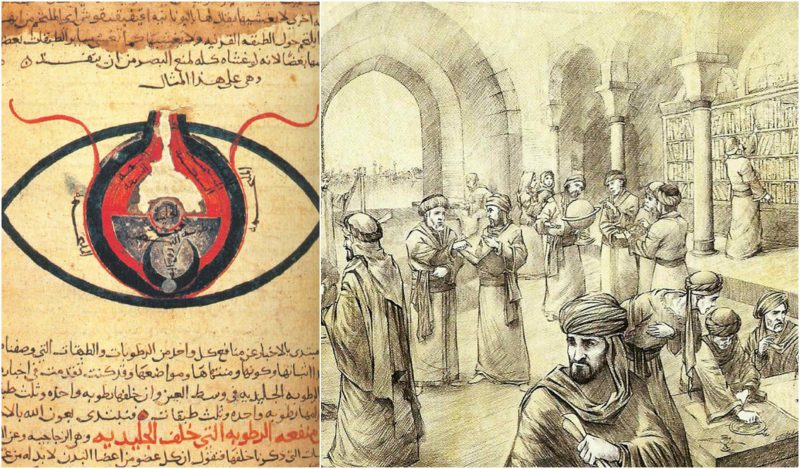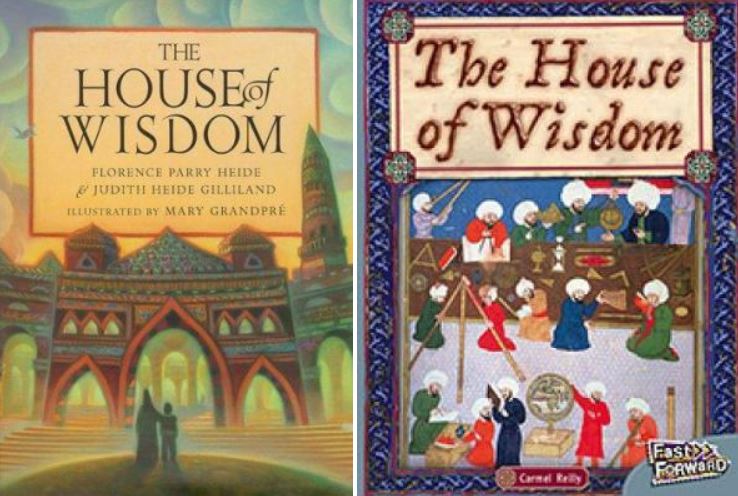Table Of Content

During the Golden Age, our region contributed some of the greatest inventions and scientific wonders of the modern world. We are rekindling the spirit of knowledge, glory and hope that inspired the region during this time, and we need you. For about 500 years the city boasted the cream of intellectuals and culture, a reputation gained during the reigns of some of its most famous Caliphs (Al-Rashid, Al-Ma’mun, Al-Mu’tadhid and Al-Muktafi).
Translations from Greece, India, and Persia
Additionally, al-Khwarizmi wrote about the astrolabe, sundial, and elaborated on Ptolemy’s geometric model. Al-Khwarizmi is also known as the first geographer of Islam with his famous Picture of the Earth treatise. In Picture of the Earth, he arranged the coordinates of hundreds of cities in the world at that time and gave instructions for drawing a new map of the world. George Sarton, one the most famous historians of science known for his book, Introduction to the History of Science, called the period between 800 and 850 AD “The Time of al-Khwarizmi”. Besides that, this mathematician is responsible for the introduction of the Hindu decimal system to the Arab world, and through it to Europe.
Greco-Arabic translation movement
He wrote Book of Animals, which discusses the way animals adapt to their surroundings, similarly to Aristotle’s History of Animals. In his book, al-Jahith argued that animals like dogs, foxes, and wolves must have descended from a common ancestor because they shared similar characteristics and features such as four legs, fur, tail, and so on. Abū Yūsuf Yaʿqūb ibn Isḥaq al-Kindī[40] was also another historical figure that worked at the House of Wisdom. Al-Kindī is the most famous for being the first person to introduce Aristotle's philosophy to the Arabic people. He fused Aristotle's philosophy with Islamic theology, which created an intellectual platform for philosophers and theologians to debate over 400 years.
Halls of Ancient Wisdom: 7 Remarkable Ancient Libraries
But it was also al-Maʾmūn’s reign that brought about a change in wind for Bayt al-Hikmah, which had hitherto specialized in Persian knowledge. In the final years of his reign, he undertook a dramatic shift in the imperial ideology. He endorsed an Islamic theology that stressed free will and dialectical reasoning (see kalām; Muʿtazilah). In an ironic show of force, al-Maʾmūn engaged in an inquisition (the miḥnah) and persecuted those who would not conform. The intellectual weaponry of the inquisition was supplied by the import of Hellenistic thought and the translation of Greek philosophy into Arabic, which al-Maʾmūn had begun sponsoring in the years prior to his conversion.
Heritage Museum of Orange County
Now, the health code described in the Word of Wisdom is widely accepted even in scientific circles. Researchers have shown again and again the negative side effects of drinking alcohol, smoking, and chewing tobacco, including diseases such as cirrhosis, pancreatitis, and many types of cancer. I remember davening for the amud as a young bar mitzvah boy, and taking on positions of responsibility and leadership. “Lines down the street to see a house, outrageous counteroffers, multiple rejections” is what Douglas Lazo, 32, and his partner at the time, now his wife, faced for more than a year and a half before buying their home in Anaheim Hills. Military might, economic strength, cultural and intellectual dominance, and staggering wealth established Baghdad as the center of an empire, with the original Bayt Al Hikma growing to become the thriving epicenter of the Islamic Golden Age. Founded in 8th century Baghdad by Caliph Harun al-Rashid of the Abbasid dynasty, Bayt Al Hikma was a melting-pot of rich intellectual traditions from across the Middle East and Europe.
A fellow expert on Aristotle was Abū ʿUthmān al-Jāḥiẓ, who was born in Basra around 776 but he spent most of his life in Baghdad. Al-Ma’mun employed al-Jāḥiẓ as a personal tutor for his children, but he had to dismiss him because al-Jāḥiẓ was "Goggled-Eyed", i.e., he had wide, staring eyes which made him frightening to look at. Topics covered in this resource include the history of Baghdad as a hub of scientific and cultural enlightenment during the Golden Age of Islam, as well as the role of the Translation Movement in preserving and expanding scientific and philosophical knowledge through the House of Wisdom. Students will delve into the historical context that gave rise to this movement, exploring how Arab scholars translated Greek, Persian and Indian texts into Arabic.
Baghdad’s Libraries Were So Impressive They Astonished European Scholars
The research paper showed that the Abbasid Dynasty had much to offer for the human civilization of intellectual and scientific progress. Caliphs were giving the translation movement, transmissions, authoring and intellectual achievements a very high level of respect and support that represented key factors to getting hold of the Hellenistic, Indian, and Persian knowledge and wisdom. After the invasion of Baghdad by the Mongols in (656 AH-1258 AD) they wrecked the library's private and public closets of books, manuscripts, maps, observatories...etc. They burned majority of the collections whilst others were thrown into the Tigris river, some say that the Mongols have built their barns using books instead of clay. The House of Wisdom (Bayt al-Hikmah) had influenced not only similar public libraries, but a new form of libraries that were for personal use and for show.
The Golden Age of Arab Civilization: How Baghdad Led the World in Learning
Ahmad ibn Musa Investigation Walkthrough - Assassin's Creed Mirage Guide - IGN
Ahmad ibn Musa Investigation Walkthrough - Assassin's Creed Mirage Guide.
Posted: Thu, 05 Oct 2023 07:00:00 GMT [source]
Employees in the House of Wisdom in Baghdad were people of higher intellectual abilities, the same was emulated in every public library across the Muslim world. They often had a staff list that reach sometimes hundreds of copyists, illuminators, binders, translators, and authors. Those whom we can consider librarians were not randomly chosen but they usually were scholars, poets, multilingual and writers who on the other side were well paid by caliphs, rulers or nobles. There have been many studies on history of Islamic libraries (Houses of Wisdom) that evolved thanks to Baghdad's house of wisdom. However there was no research that could show the impact of the House of Wisdom (Bayt al-Hikmah) in Baghdad on formation of other new Islamic libraries. The current study analyses the organizational structure of Bayt al-Hikmah al-Baghdad and its divisions and services that it provided for scholars and readers.

Baghdad was a very prosperous and rich city, which allowed Al-Ma’mun to spare no expenses to purchase more works, including those from other countries. The study has demonstrated that the house of wisdom was the leading library or in other words a leading Islamic university that the Abbasid age required. The legacy of the house of wisdom library was wasted and the west did not find except Arabic sources to obtain the heritage of ancient human civilizations. The invasion of the Mongols and the destruction of the library marked the fall of Baghdad and ultimately the collapse of the Abbasid Caliphate that had left the Muslim world in crisis in the years to come.
Baghdad’s location and cosmopolitan population made the perfect location for a stable commercial and intellectual center. The Abbasid dynasty had a strong Persian bent, and adopted many practices from the Sassanian Empire – among those, that of translating foreign works, except that now texts were translated into Arabic. For this purpose, al-Mansur founded a palace library, modeled after the Sassanian Imperial Library, and provided economic and political support to the intellectuals working there. He also invited delegations of scholars from India and other places to share their knowledge of mathematics and astronomy with the new Abbasid court.
Curated by al-Rashid’s father and grandfather, the collection spanned various subjects in the arts and sciences. Three decades later, the collection had grown so large that al-Rashid’s son, Caliph Al-Mamun (ruled 813–833 CE), built extensions to the original building and turned it into a large academy named Bayt al-Hikma (the House of Wisdom). The House of Wisdom was the largest repository of books in the world by the middle of the ninth century and became the leading center for various branches of study, including mathematics, astronomy, medicine, alchemy, chemistry, zoology, geography, and cartography. The House of Wisdom (بيت الحكمة; Bayt al-Ḥikmah) refers either to a major Abbasid public academy and intellectual center in Baghdad or to a large private library belonging to the Abbasid Caliphs during the Islamic Golden Age. The House of Wisdom is the subject of an active dispute over its functions and existence as a formal academy, an issue complicated by a lack of physical evidence following the collapse of the Abbasid Caliphate and a reliance on corroboration of literary sources to construct a narrative.
This lesson plan sheds light on the scientific discoveries and inventions that emerged during this era, showcasing their impact on today's technology. This resource includes informational slides for classroom use, online readings and student activities – all designed to provide students with a deeper understanding of the Muslim scholars who paved the way for modern science. Great Muslim scholars exchanged ideas, created inventions that would radically change society, and translated philosophical works from the Greeks, the Persians, the Europeans, the Chinese, the Indians, and the Sumerians. The heyday of Baghdad was 1,200 years ago when it was the thriving capital of the Muslim world.
No comments:
Post a Comment